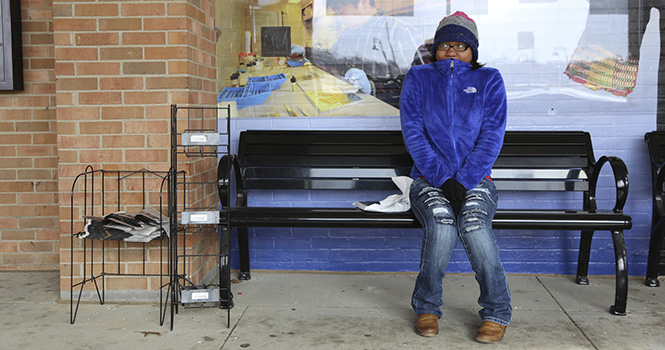Tips to survive the winter weather
January 23, 2013
Everyone is potentially at risk during a winter storm. The actual threat to you depends on your specific situation. About 70 percent of people who die in ice or snow events lose their lives in automobiles. Another 25 percent are caught out in the storm itself.
How to avoid frostbite
• According to the Centers for Disease Control and Prevention, frostbite occurs when a person suffers a loss of feeling and color in the nose, ears, cheeks, chin, fingers or toes caused by freezing.
• Symptoms of frostbite:
o White or yellowish patches of skin that are numb
o Skin feels hard, waxy, or numb, or is blistering or becoming darkened or black
o Swelling, itching, burning, and deep pain during the healing process
• Avoiding frostbite:
o Layers: make sure to wear as many layers as possible but also wear loose clothing in order to have proper circulation and prevent sweating.
o Protect all extremities of your body: wearing hoods, hats, scarves, earmuffs and facemasks. Gloves are key because hands are most likely to exhibit frostbite before any other part of the body.
o Avoid too much exposure to breezes and drafts
o Eat hot foods and drink warm drinks
o Keep thermostat at least 70 degrees
Information courtesy of the National Oceanic and Atmospheric Administration
Winterizing your car
• Check the following fluid levels in your car:
o Gas (a full gas tank keeps the fuel line from freezing)
o Antifreeze
o Brake
o Windshield washer
o Oil (use lighter oils that won’t congeal in cold weather)
• Also get your car maintained for:
o Battery
o Ignition
o Brakes
o Fuel and Air Filters
o Heater and Defroster
o Lights
o Thermostat
o Windshield Wipers
o Tires (check the tread on your tires)
• Keep an emergency kit somewhere in your car that contains:
o A shovel
o Windshield scraper
o Flashlight
o Battery powered radio
o Extra batteries
o Water
o Non-perishable, high calorie foods
o Matches
o Extra winter clothes
o First Aid Kit
o Blankets
o Tow chains and ropes
o Road salt and sand
o Booster cables
o Emergency flares
o Fluorescent distress flag
Information courtesy of the Federal Emergency Management Agency
Contact Celia Fernandez at [email protected].

























